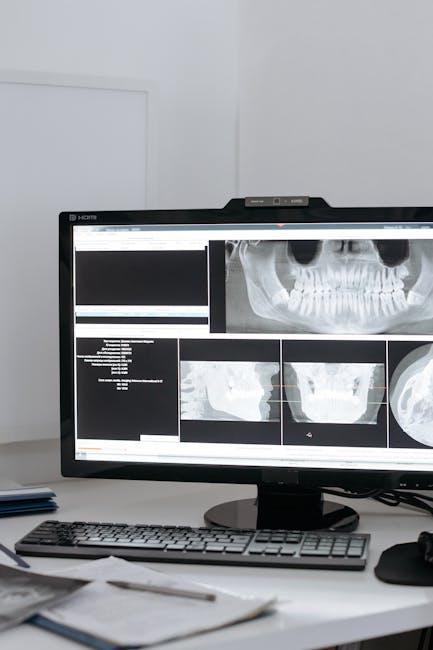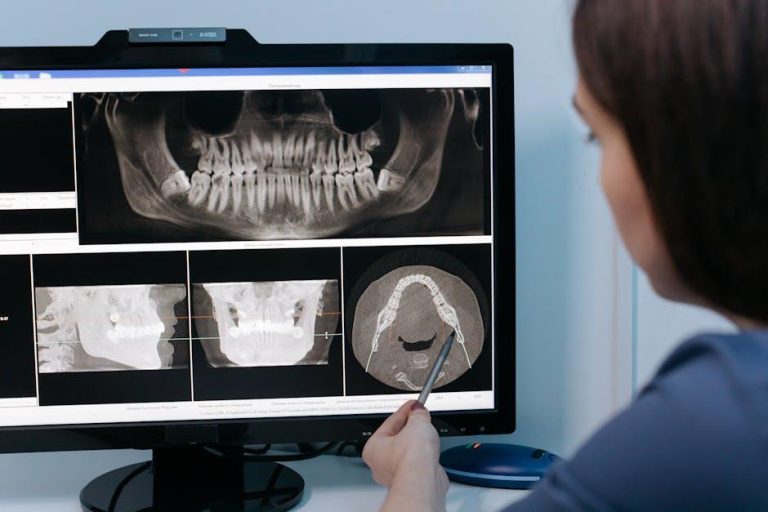
Dental Imaging Tech Boom: AI & 3D Scanners Reshaping the $6B Market – PR Newswire
The dental imaging industry is undergoing a monumental transformation, largely driven by the rapid advancements in artificial intelligence (AI) and 3D scanning technologies. As reported by PR Newswire, this sector is expected to grow exponentially, reshaping a market currently valued at approximately $6 billion. Cutting-edge dental imaging technologies are not only redefining diagnostics and treatment but also enhancing patient experiences and outcomes. In this comprehensive overview, we’ll explore how AI and 3D scanners are revolutionizing digital dentistry, their benefits, market trends, and what the future holds for practitioners and patients alike.
Understanding the Dental Imaging Market Landscape
The dental imaging market encompasses a variety of technologies designed to capture detailed images of teeth, gums, and jaw structure, essential for accurate diagnosis and effective treatment planning. It includes 2D X-rays, conventional radiography, Cone Beam Computed Tomography (CBCT), and increasingly, AI-powered software and 3D intraoral scanners.
In recent years, the market has experienced significant disruption due to digital transformation, with AI and 3D scanners leading the charge. This shift promises improved clinical precision, faster workflow, and enhanced data visualization capabilities.
How AI is Revolutionizing Dental Imaging
Artificial intelligence is embedded within dental imaging platforms to provide:
- Automated Diagnosis: AI algorithms analyze X-rays and 3D images rapidly to detect cavities, periodontal disease, and oral cancers with high accuracy.
- Predictive Analytics: AI can forecast disease progression, allowing for proactive treatment plans tailored to individual patients.
- Workflow Efficiency: AI-powered systems reduce manual workload by automating image enhancement, measurements, and report generation for faster clinical decisions.
Benefits of AI in Dental Imaging
- Higher diagnostic accuracy reduces human error.
- Improves patient outcomes with early detection.
- Enhanced data storage and retrieval through integrated electronic health records (EHRs).
- Supports tele-dentistry by enabling remote image analysis.
The Rise of 3D Dental Scanners
3D dental scanners have drastically improved the way dental professionals acquire images. Unlike traditional 2D X-rays, 3D scanners provide a volumetric, real-time view of oral anatomy, crucial for prosthodontics, orthodontics, and implantology.
These intraoral scanners allow dentists to capture precise impressions digitally, replacing messy physical molds and shortening the turnaround time for restorations.
Key Advantages of 3D Scanners
- High-resolution, accurate imaging facilitating better treatment planning.
- Improved patient comfort and reduced chair time.
- Ease of integration with CAD/CAM systems for designing crowns, bridges, and aligners.
- Real-time visualization enables faster adjustments and communication with patients.
Market Growth Overview
| Segment | Market Size (2023) | Projected CAGR (2023-2030) | Key Drivers |
|---|---|---|---|
| AI Dental Imaging Software | $1.2B | 18.5% | Automation, Diagnostic Precision |
| 3D Intraoral Scanners | $2.5B | 14.2% | Digital Impressions, Restorative Dentistry |
| Traditional X-rays and CBCT | $2.3B | 5.8% | Existing Infrastructure, Routine Screening |
Real-World Applications & Case Studies
Leading dental practices globally have adopted AI and 3D scanning technologies with phenomenal results. Consider the case of a mid-sized dental clinic in New York that integrated AI-driven diagnostic software into their workflow:
- Outcome: The clinic reported a 25% reduction in misdiagnosed cases of early cavities and gum disease within six months.
- Patient Satisfaction: Enhanced patient trust due to clearer visual explanations and faster treatment plans.
- Operational Efficiency: AI tools reduced image processing and reporting time by nearly 30%, allowing more patients to be seen daily.
Practical Tips for Dental Practices Embracing New Technologies
- Invest in Training: Staff should be trained to use AI systems and 3D scanners effectively to maximize benefits.
- Choose Compatible Equipment: Ensure hardware and software integrate seamlessly with existing dental practice management systems.
- Focus on Patient Education: Use visual AI outputs and 3D scans to educate patients, improving compliance and satisfaction.
- Stay Updated: Dental tech is evolving rapidly – stay informed about updates, new tools, and regulatory guidelines.
Challenges and Considerations
Despite the promising growth and benefits, some challenges remain:
- Initial Investment: High upfront costs for 3D scanners and AI software may be a barrier for smaller practices.
- Data Privacy: Ensuring patient data security with AI platforms is critical.
- Regulatory Compliance: Navigating FDA approvals and local regulations can delay tech adoption.
The Future of Dental Imaging Technologies
As AI algorithms become more sophisticated and 3D scanner resolution improves further, the next wave of dental imaging technology will likely include:
- Fully automated diagnosis with AI-powered predictive models.
- Personalized dental care plans based on comprehensive digital models.
- Augmented reality (AR) applications for live procedural guidance.
- Greater integration with tele-dentistry services for remote consultations.
The $6 billion dental imaging industry stands at the cusp of a renaissance fuelled by these innovations, promising improved oral health outcomes globally.
Conclusion
The convergence of AI and 3D scanning technology is revolutionizing the dental imaging market, transforming it into a highly efficient, precise, and patient-friendly arena. With the market expected to boom beyond $6 billion, dental professionals who invest in these innovations stand to gain competitive advantages, deliver superior patient care, and streamline their operations. Embracing these advancements is no longer a luxury but a necessity in modern dentistry.
Stay tuned to trusted sources like PR Newswire for ongoing updates as the dental imaging tech boom reshapes healthcare paradigms worldwide.


